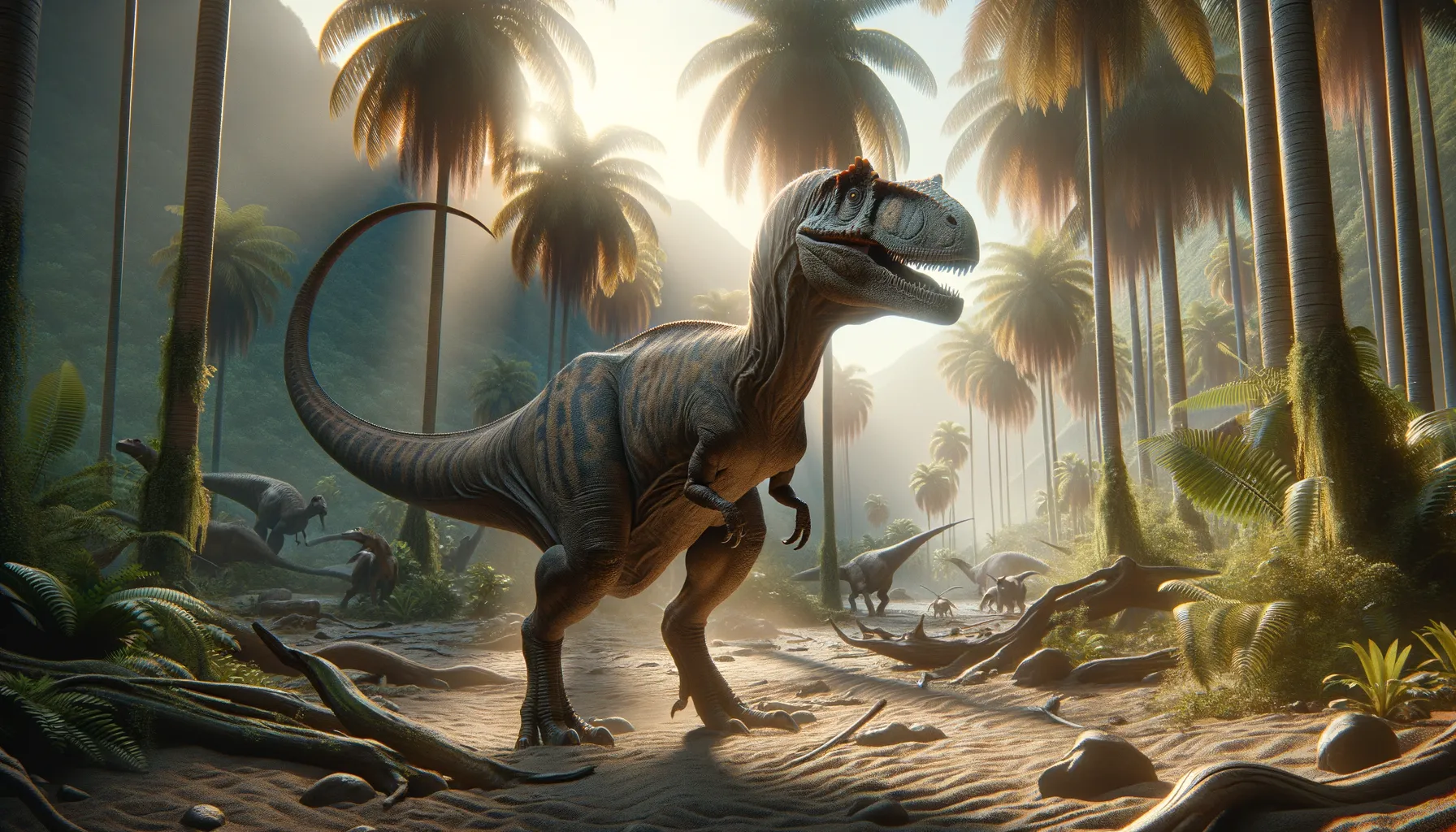
Sacisaurus
Small, swift, and fascinatingly unique!
Period
Triassic
Length
Approximately 1.5 to 2 meters long.
Height
Estimated around 0.5 meters at the hip.
Weight
Estimated around 10 to 20 kilograms.
Sacisaurus was a relatively small dinosaur from the Late Triassic period. Discovered in Brazil, this herbivorous creature intrigued scientists with its unique skeletal structure and characteristics, marking it as an important piece of the dinosaur evolutionary puzzle. With its slim build and lightweight body, Sacisaurus likely moved quickly, aiding in its survival amongst larger Triassic predators. Its discovery helped deepen our understanding of early ornithischian dinosaurs.
Diet
Sacisaurus was an herbivore, primarily feeding on plant matter available in its environment. Its teeth and jaw structure suggest an adaptation to efficiently process plant materials, likely consuming ferns, leaves, and possibly small seeds.
Hunting
Sacisaurus did not hunt as it was an herbivore. It likely foraged for plants and vegetation, navigating through the underbrush to find adequate nutrition.
Environmental challenges
During the Triassic period, Sacisaurus faced numerous environmental challenges such as varying climates and the presence of numerous predators. Its small size may have made it vulnerable, yet it was also advantageous for agility and quick escapes. Furthermore, competition for food sources could have posed a significant challenge, necessitating adaptive behaviors for survival.
Speed
Likely agile and quick for a small dinosaur.
Lifespan
Lived up to around 10-15 years.
First discovery
Discovered in Brazil in the early 2000s.
Fun Facts
- Sacisaurus was a small plant-eating dinosaur that lived about 230 million years ago during the Late Triassic period.
- It was discovered in Brazil and its name means 'Saci's lizard,' after a Brazilian folklore character known for having one leg.
- Sacisaurus belonged to a group called silesaurids, which were close relatives of the earliest dinosaurs.
- Despite being small, around 1 to 1.5 meters long, Sacisaurus played a significant role in understanding dinosaur evolution.
- Only a few skeletons of Sacisaurus have been found, making any new discovery exciting for scientists.
- Sacisaurus had a unique beak-like structure on its lower jaw, which suggests it could have had a specialized diet.
- This dinosaur helps fill a gap in the fossil record between early dinosaur relatives and true dinosaurs.
Growth and Development
Sacisaurus likely experienced relatively rapid growth during its juvenile stages, quickly reaching a size that would deter certain predatory threats. Its development would have involved honing its foraging skills and learning to navigate a complex ecological environment. The early years of a Sacisaurus's life would have been critical in establishing survival instincts and social interactions.
Habitat
Sacisaurus inhabited the Late Triassic landscapes of what is now Brazil, likely favoring areas with dense vegetation and abundant plant life. This habitat would have provided both adequate nutrition and cover from predators. The region's climate and geographical features played a pivotal role in shaping the lifestyle and ecological strategies of Sacisaurus.
Interaction with other species
Sacisaurus interacted with a variety of other species, including larger predators and herbivores. While its small size made it a less conspicuous target, it had to remain vigilant against predatory threats. Its co-existence with other herbivores might have led to competition for food sources, highlighting the need for strategic foraging behaviors.
Natural lifespan
Sacisaurus had a natural lifespan of around 10 to 15 years.
Reproduction
Sacisaurus reproduced by laying eggs, similar to other dinosaurs. Nesting behavior likely involved selecting safe locations to deposit and protect their eggs from predators. Parental involvement, if any, remains a topic of scientific speculation, with some evidence suggesting limited care after hatching.
Social behaviour
The social behavior of Sacisaurus remains largely speculative, but it may have exhibited some degree of social interaction, especially during foraging and nesting. Small groups may have formed to enhance survival prospects, offering protection against predators and facilitating shared experiences in food acquisition.
Fossil locations
The fossils of Sacisaurus are primarily found in Brazil, providing a rich insight into its anatomical structure and ecological role. These fossil sites have yielded crucial evidence about the diversity of early Ornithischian dinosaurs, contributing significantly to paleontological research and knowledge.
